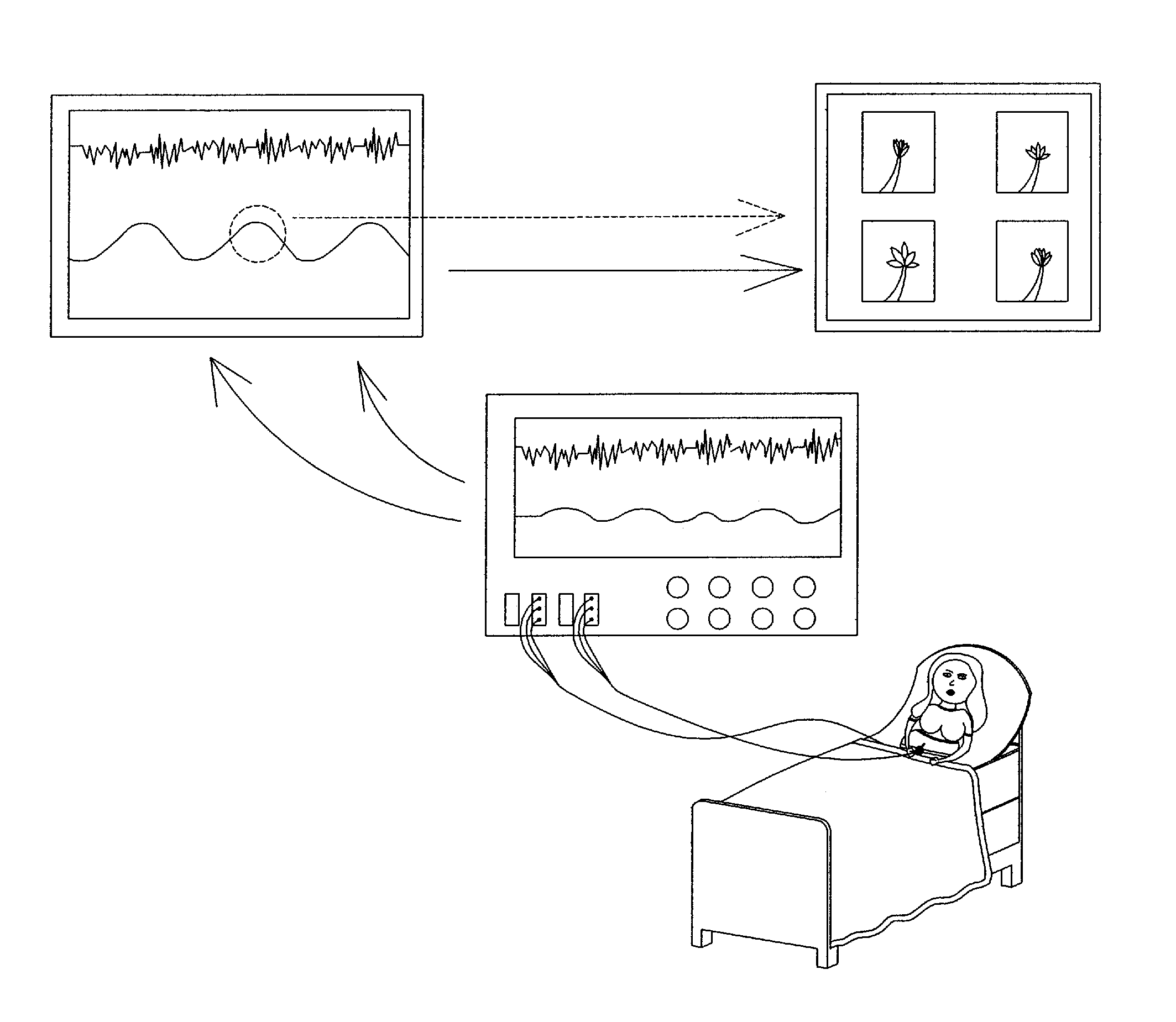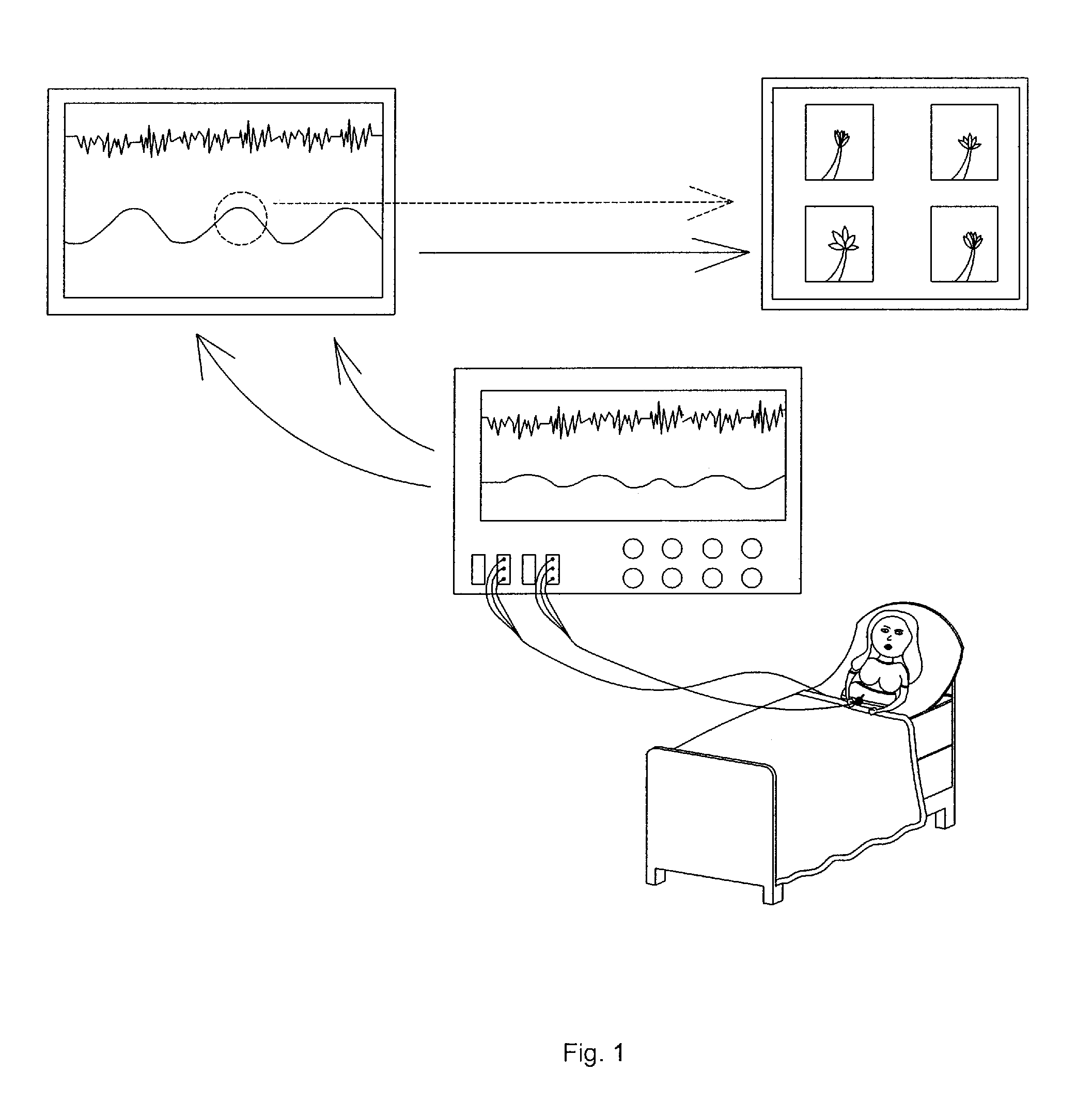Method and apparatus providing timed visual images during childbirth
- Summary
- Abstract
- Description
- Claims
- Application Information
AI Technical Summary
Benefits of technology
Problems solved by technology
Method used
Image
Examples
Embodiment Construction
The instant invention is based upon a computer system having a processor, a visual monitor, and a software program that is coupled to biomedical transducers. The software program may receive directional signals from existing childbirth equipment found at a birth center, namely equipment that is used to monitor the fetus and the maternal contraction pattern. The computer system consists of a monitor, either an LCD, plasma, or LED monitor will suffice being of a size that can be easily viewed by the expectant mother. If the monitor is placed proximate to the expectant mother, a 15″ monitor is sufficient. If the monitor is placed on a wall a distance from the expectant mother, a 60″ monitor might be more appropriate. It should be noted that a larger monitor allows others in the room to participate in the birthing process wherein contractions can be visually monitored and the expectant mother coached at the appropriate time. The monitor can be mounted on a pole, wall, or boom arm or in ...
PUM
 Login to View More
Login to View More Abstract
Description
Claims
Application Information
 Login to View More
Login to View More - R&D
- Intellectual Property
- Life Sciences
- Materials
- Tech Scout
- Unparalleled Data Quality
- Higher Quality Content
- 60% Fewer Hallucinations
Browse by: Latest US Patents, China's latest patents, Technical Efficacy Thesaurus, Application Domain, Technology Topic, Popular Technical Reports.
© 2025 PatSnap. All rights reserved.Legal|Privacy policy|Modern Slavery Act Transparency Statement|Sitemap|About US| Contact US: help@patsnap.com



